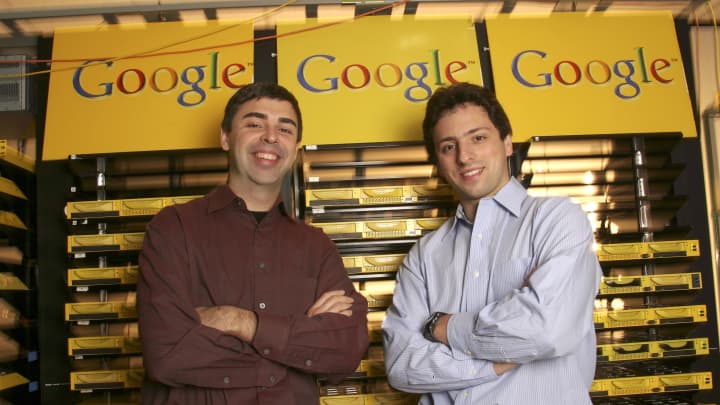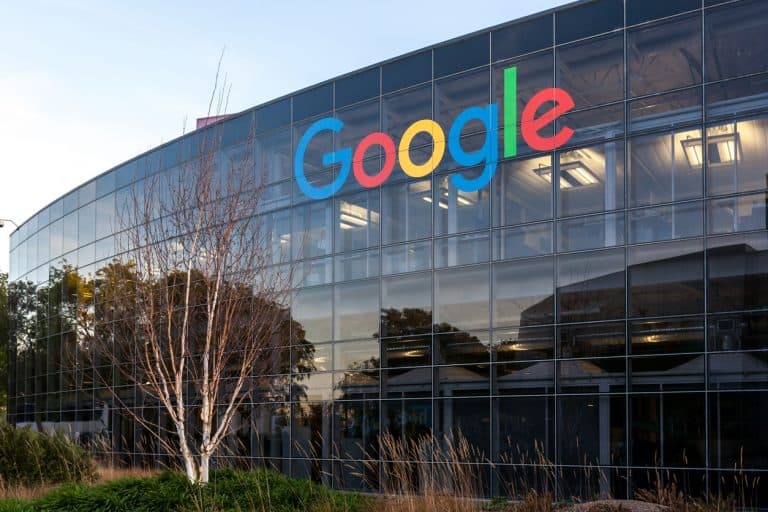Google was founded on September 4, 1998, in Menlo Park, CA, by Larry Page and Sergey Brin
Google has become an integral part of our daily lives, serving as the go-to source for information, historical research, entertainment, and communication. But have you ever wondered just how old this tech giant is? Let’s take a journey through time and explore the fascinating history of Google, from its humble beginnings to its current status as a global powerhouse.
The Birth of Google

Google’s story began in 1995 when Larry Page and Sergey Brin, two Ph.D. students at Stanford University, started working on a research project called “BackRub.” Their goal was to create a more efficient and effective way to search the rapidly expanding internet. In 1997, they renamed their project “Google,” a play on the mathematical term “googol,” which represents the number 1 followed by 100 zeros.
How old is the Google search engine? On September 4, 1998, Page and Brin officially founded Google Inc. in a garage in Menlo Park, California. This date marks the company’s birth, which would revolutionize how we access information online.
The Early Years
In the late 1990s and early 2000s, the Google search engine quickly gained popularity from internet users thanks to its simple, user-friendly interface and its ability to deliver relevant search results. The company introduced several innovative features during this time, including:
- Google Launched with their PageRank algorithm (1998)
- AdWords advertising platform (2000) – now known as Google Ads
- Google Toolbar browser extension (2000)
- Google Images search (2001)
- Google News (2002)
These early innovations laid the foundation for Google’s future success and helped establish the company as a leader in the tech industry.
Going Public and Expanding
On August 19, 2004, Google LLC went public with an initial public offering (IPO) on the NASDAQ stock exchange. The IPO raised $1.67 billion and valued the company at $23 billion. This event marked a significant milestone in Google’s history and provided the company with the resources to expand its operations and develop new products and services.
Throughout the mid-2000s, Google’s services continued to grow and innovate. Some notable developments that Google released during this period include:
- Gmail (2004)
- Google Maps (2005)
- Google Earth (2005)
- YouTube acquisition (2006)
- Google Chrome browser (2008)
- Android phone mobile operating system (2008)
These products and acquisitions helped Google, the search engine giant, extend its reach beyond search and establish itself as a diversified technology company.
The Modern Era
In the 2010s and early 2020s, Google has continued to evolve and adapt to the changing digital landscape. The company has made significant investments in artificial intelligence, machine learning, and cloud computing, leading to the development of groundbreaking technologies like Google Assistant, Google Lens, and Google Cloud Platform.
In 2015, Google underwent a major restructuring, becoming a subsidiary of a new holding company called Alphabet Inc. This change allowed Google to focus on its core internet business while enabling other Alphabet subsidiaries to pursue ambitious projects in areas like self-driving cars (Waymo) and biomedical research (Calico).
In addition to changing how people search and find information, Google has created an entire marketing industry around its ad platform.
Google’s advertising platforms, particularly AdWords (now known as Google Ads) and AdSense, have revolutionized the online advertising industry. By leveraging its vast Google users data and advanced targeting capabilities, Google has enabled businesses of all sizes to reach their target audiences effectively. The company’s advertising revenue has grown exponentially over the years, making it a dominant force in the digital economy. Google’s success in online advertising has not only fueled its own growth but has also shaped how businesses approach digital marketing and contributed to the rapid expansion of e-commerce and online services.
Google’s Age Today
Google is 25 years old as of 2024. The company has grown from a small startup in a garage to a global technology leader with over 150,000 employees and a market capitalization of more than $1 trillion.
Despite its age, Google remains at the forefront of innovation, constantly pushing the boundaries of what is possible with technology. As we look to the future, it is clear that Google will continue to play a pivotal role in shaping the digital world for years to come.
Key Milestones in Google’s History
- 1995: Larry Page and Sergey Brin begin working on “BackRub” at Stanford University
- 1997: “BackRub” is renamed “Google”
- September 4, 1998: Google Inc. is officially founded
- 2000: AdWords advertising platform and Google Toolbar are launched
- 2004: Google goes public with an IPO on the NASDAQ stock exchange
- 2005: Google Maps and Google Earth are introduced
- 2006: Google acquires YouTube
- 2008: Google Chrome browser and Android mobile operating system are launched
- 2015: Google becomes a subsidiary of Alphabet Inc.
- 2023: Google celebrates its 25th anniversary
From its humble beginnings to its current status as a global technology leader, Google has had a remarkable journey over the past 25 years. As the company continues to innovate and evolve, it will shape the digital world’s future in exciting and unexpected ways.
Google Advertising Products
The history of Google’s journey advertising products reflects the company’s evolution from a simple popular search engine to a dominant force in online advertising. Here’s an overview of some of Google’s key advertising products:
Google Search Ads
- Launch: 2000
- Evolution: Started as AdWords, Google Search Ads allowed businesses to display ads in search results based on user queries. Over time, it evolved with features like Ad Extensions, Enhanced Campaigns, and Smart Bidding to improve ad relevance and performance.
Google TV (formerly Google AdWords for Video)
- Launch: 2012
- Evolution: Originally integrated with YouTube as AdWords for Video, it allowed advertisers to display video ads on YouTube and the Google Display Network. It evolved into YouTube Ads, with formats like TrueView, non-skippable ads, and bumper ads.
YouTube Ads
- Integration: Mid-2000s
- Evolution: YouTube, acquired by Google in 2006, became a major platform for video ads. Advertisers can target based on demographics, interests, and viewing behaviors, with various ad formats including skippable and non-skippable video ads.
Gmail Ads
- Launch: 2013
- Evolution: These are interactive ads appearing at the top of a user’s Gmail inbox. Initially standalone, Gmail Ads were integrated into the Google Ads platform in 2015, allowing more seamless campaign management alongside other Google ad products.
Google Display Network (GDN)
- Launch: 2005
- Evolution: GDN allows businesses to place display ads on a vast network of websites across the internet. It has evolved to offer targeted advertising based on user behavior, interests, and demographics.
AdSense
- Launch: 2003
- Evolution: AdSense provided a way for website owners to monetize their content by displaying ads. It uses a pay-per-click model and has evolved to support various ad formats and better content matching.
Mobile Ads
- Launch: 2009
- Evolution: With the rise of smartphones, Google introduced mobile-specific ad formats. This included app-install ads, mobile search ads, and display ads on mobile web pages and in apps, evolving with the mobile ecosystem to improve targeting and user experience.
Google TV Ads
- Launch: 2007
- Discontinued: 2012
- Evolution: Google TV Ads attempted to enter the television advertising market by allowing advertisers to place ads on national TV networks through the AdWords interface. These Google services used an auction-based system similar to online ads, targeting specific audiences and tracking ad performance. Despite initial excitement, Google TV Ads was discontinued due to limited adoption and challenges in changing the traditional TV ad buying process.
Google Audio Ads and Radio Ads
- Launch: 2006 (Audio Ads), 2008 (Radio Ads)
- Discontinued: 2009
- Evolution: Google Audio Ads and Radio Ads were part of Google’s expansion into offline media advertising. Audio ads allowed advertisers to buy ad space on streaming music and radio platforms, while radio ads extended this to terrestrial and satellite radio. These services aimed to apply Google’s online ad targeting and analytics capabilities to the audio world. However, due to challenges in market penetration and the complex nature of the radio advertising industry, Google discontinued its Radio Ads service in 2009.
